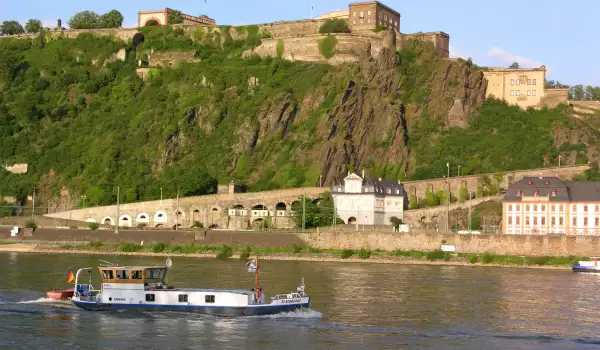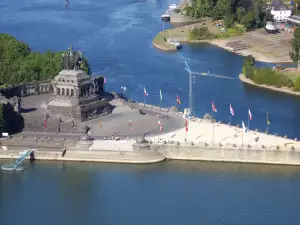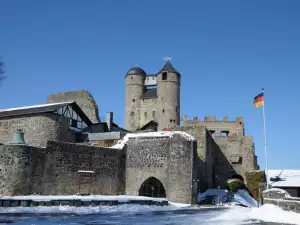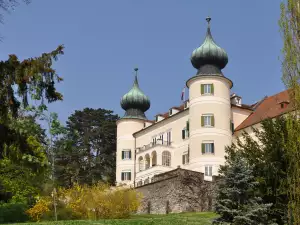The German Corner in Kolbenz

The historic German city of Koblenz is a place that can not leave you disappointed in respect of outstanding cultural monuments. Among the emblems of the city is where the Moselle River flows into the Rhine. Known as the German Corner (Deutsches Eck) that is naturally formed by two rivers, the land has become over the centuries a rich historical emblem of the Koblenz area. The German Corner is famous for its magnificent monument that was erected in honor of Emperor Wilhelm I. He is shown astride a horse, and today is celebrated as a symbol of German unity.
Ehrenbreitstein Castle, which is another historic landmark in Koblenz , is one of the best places where you can enjoy the perfect view of the German corner. And likely around you have hundreds of other tourists and photographers who are trying to capture the perfect angle to this landmark of Koblenz .
Slightly behind the monument of Wilhelm I of the coast Ehrenbreitstein you can see the old building of the local government. A little down and right it is a pier for boats that cost from one hotel to the other side for about 1.5 euros per person. Another option is to take open lift chairs, which will take you to the German corner, and will allow you to enjoy the lovely view of it. This lift is not for people who fear adrenaline.
Statue of Emperor Wilhelm I was raised in this place in 1897, nine years after the death of the German head. His figure is depicted on horseback, a massive monument is accompanied by the words of a famous German poem: "The Empire will never be destroyed, while united and loyal! . Another sign can be seen on the statue of the German corner, which is dedicated to Wilhelm the Great.

In 1945, the figure of the German corner was seriously damaged due to bombing by the Americans, which requires the entire statue to be removed. The French government had a concept that also left unfulfilled - to build in confluence of Elbe and Moselle a monument symbol of peace and understanding among peoples.
After the formation of the Federal Republic of Germany and the German Democratic Republic in 1949, the country is divided into capitalist West and communist East. In a sign of deep desire for a united Germany President Theodor Heuss turns the corner into a German monument to German unity. Here are elevated armorial bearings of all German states, including those of the former German territories such as Silesia, Pomerania and East Prussia. In place of the horse statue was erected a German flag. After changes in 1989 to 3 October 1990 were added the emblems of the new Länder.

The new statue of William l at the German corner was inaugurated on September 25, 1993. It reaches a height of 37 meters, only the emperor is the height of 14 meters. German corner in Koblenz was declared a monument of world heritage by UNESCO. Yearly to see the German corner arrive here nearly two million tourists. Besides the symbols of all German states, at the German corner you can see the EU flag and American flag in honor of the victims of the tragedy of September 11, 2001















